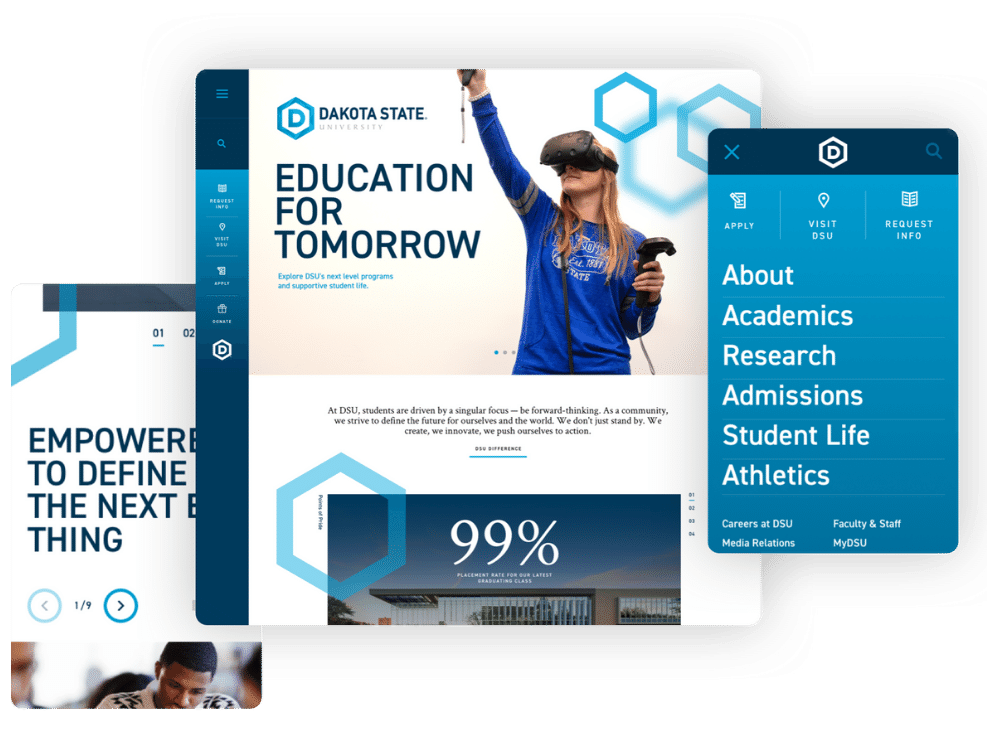Boost Engagement With Cutting-edge Web Site Style Solutions
A thoughtfully crafted customer experience, underpinned by critical visual design and interactive elements, can significantly improve individual interaction. By exploring various methods such as responsive style and personalized web content, organizations can develop a system that not just captivates users but additionally fosters long-term commitment.
Recognizing Customer Experience
Understanding customer experience (UX) is crucial for producing reliable website layout services, as it straight affects just how users interact with digital platforms. A thorough UX approach encompasses different aspects, including customer, availability, and use satisfaction, every one of which add to the general effectiveness of an internet site.
To begin with, functionality concentrates on how easily individuals can browse and discover the information they seek. website design copyright. A well-structured design, user-friendly navigating, and clear phone call to action are fundamental elements that boost use. Availability makes sure that all users, consisting of those with disabilities, can efficiently communicate with the site. This entails designing material that is certified with availability requirements and can be quickly accessed making use of assistive innovations.
Furthermore, recognizing user personalities is vital for customizing the experience to satisfy specific target market requirements. By performing individual study and screening, developers can collect understandings that inform style choices, ensuring the website not just fulfills aesthetic objectives but likewise satisfies functional needs. Eventually, a thoughtful approach to UX design promotes involvement, encourages retention, and enhances total user complete satisfaction, which are vital for the success of any electronic system.
Visual Design Methods
Including efficient visual style techniques is essential for recording user attention and boosting the total individual experience on an internet site. A well-thought-out aesthetic hierarchy guides users through the content, enabling them to conveniently absorb and navigate details. This can be achieved via the strategic use of typography, shade plans, and spacing, which jointly produce a appealing and natural layout.
Shade plays a crucial role in stimulating emotions and establishing brand name identification. Making use of a balanced color scheme that aligns with the brand name's principles can promote experience and depend on. Furthermore, including premium photos and graphics enhances visual charm and can significantly enhance customer involvement.
Whitespace, usually forgot, is just as important as it enables content to take a breath and protects against overwhelming users with mess. It assists in much easier analysis and comprehension, bring about an extra satisfying searching experience.

Interactive Elements for Interaction

One secret aspect of interactive layout is customization. Tailoring experiences based on customer actions and preferences can significantly enhance engagement. Customized content referrals or vibrant user interfaces that adapt my review here to specific choices develop a feeling of ownership and significance, encouraging customers to check out better.
Gamification is another effective method. Integrating game-like aspects, such as achievements or rewards for finishing jobs, can change mundane communications into enjoyable experiences. This method not just boosts interaction but also urges customers to return, producing a devoted audience.
Moreover, interactive elements can promote social sharing, amplifying a web site's reach. Features like comment areas, share buttons, and user-generated content locations foster area interaction, turning visitors right into active participants (website design copyright). Inevitably, the tactical use of interactive components is important for producing a engaging and compelling site that resonates with customers
Flexible and responsive Design
A properly designed site needs to prioritize receptive and adaptive design to make certain optimum user experiences across a selection of devices and display dimensions. Receptive style employs liquid grids and Check This Out flexible photos, permitting the layout to instantly readjust based on the audience's display size. This method ensures that customers can easily communicate and navigate with the web content, no matter whether they are using a tablet, desktop, or smartphone .
On the other hand, adaptive style utilizes predefined formats that are customized to specific tool groups. This suggests that the website finds the sort of tool being used and serves the appropriate format, which can improve packing times and enhance the display of essential elements. While both techniques intend to improve usability, receptive layout is usually preferred for its fluidness and smooth transition in between devices.
Incorporating responsive and flexible style not only boosts user complete satisfaction but also positively affects online search engine positions. Online search engine focus on mobile-friendly sites, hence increasing exposure and attracting even more site visitors. Investing in these style techniques is critical for businesses looking to involve their target market efficiently and preserve an affordable edge in today's digital landscape.
Analyzing Individual Responses and Information

Assessing metrics such as bounce prices, time on page, and click-through prices supplies a quantitative point of view on individual engagement. These metrics help developers determine which material resonates and which locations might call for optimization. Additionally, A/B testing can be employed to review variants in layout, enabling developers to make educated decisions based upon customer communications.
Incorporating customer feedback not only enhances internet site usability yet likewise promotes a feeling of area and count on. Engaging with customers with comments loopholes grows loyalty and motivates repeat visits. Inevitably, leveraging user responses and data analysis is important to producing a dynamic, user-centered internet site that adjusts to evolving customer needs and preferences, thus driving higher engagement and complete satisfaction.
Verdict
To conclude, ingenious internet site design remedies dramatically enhance customer involvement by focusing on user experience, employing effective aesthetic methods, and integrating interactive aspects. The execution of receptive and adaptive style ensures ease of access across numerous devices, even more promoting user communication. Continuous analysis of customer responses and go now data facilitates ongoing enhancements, leading to continual fulfillment and commitment. Eventually, the convergence of these style principles grows an interesting online environment, vital for driving enduring individual involvement and dedication.
A thoughtfully crafted individual experience, underpinned by tactical aesthetic layout and interactive elements, can substantially boost individual interaction.Integrating reliable visual design approaches is necessary for capturing user interest and improving the total individual experience on a site.User responses and information evaluation are vital parts of reliable website layout, as they give valuable insights right into customer habits and preferences. Eventually, leveraging customer responses and information evaluation is indispensable to producing a vibrant, user-centered internet site that adapts to advancing customer demands and choices, therefore driving greater engagement and satisfaction.
In verdict, cutting-edge internet site style remedies significantly boost customer involvement by focusing on user experience, utilizing effective aesthetic techniques, and integrating interactive elements.